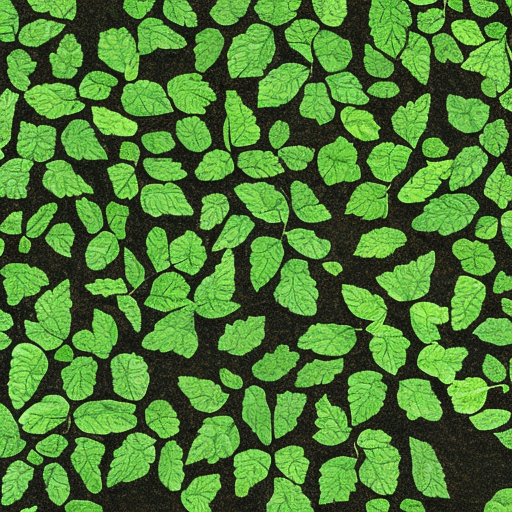Is Photosynthesis Endothermic or Exothermic?
Photosynthesis is an important process that occurs in plants.
But is photosynthesis endothermic or exothermic?
Today, we will discuss photosynthesis and determine whether it is an exothermic or endothermic reaction.

Photosynthesis is an endothermic process.
Photosynthesis is an endothermic (energy-consuming) process. This means it requires an input of energy to occur. Here is a more detailed explanation:
- In photosynthesis, plants use sunlight energy to synthesize glucose and oxygen from carbon dioxide and water.
- Absorbing sunlight energy and converting it into chemical energy requires an input of energy. This makes photosynthesis an endothermic process.
- The specific light-dependent reactions where water is split to release oxygen require photon energy from sunlight to proceed. This absorbs energy.
- The Calvin cycle reactions where CO2 is converted to sugar also require energy in the form of ATP and NADPH which are generated during the light reactions.
- The sum total of all the chemical reactions in photosynthesis stores more energy in molecules like glucose than what you start with in CO2 and H2O. This net storage requires energy input.
- Respiration, on the other hand, releases energy by breaking down glucose and is considered an exothermic process. Photosynthesis and respiration complement each other.
- Some of the energy from sunlight is also converted to heat, but the overall process requires and absorbs high-energy photons to proceed.
So in summary, photosynthesis requires sunlight energy absorption and transformation to occur, making it definitively an endothermic, energy-consuming process. The photons provide this necessary energy.
Explain It To A Child
Photosynthesis is a chemical reaction that happens in plants. They use energy from the sun to turn water and carbon dioxide into oxygen and glucose.
The light energy input is converted into chemical potential energy in the bonds of the products, and this energy is used to drive the formation of ATP and NADPH.
Is photosynthesis endothermic or exothermic?
Photosynthesis is an endothermic reaction because it absorbs energy in the form of light.
This energy is used to convert water and carbon dioxide into oxygen and glucose.
The endothermic nature of photosynthesis means that it can take place even when the surrounding air temperature is low.
- However, high temperatures can disrupt the process of photosynthesis and lead to the release of oxygen rather than its production.
- For this reason, plants often close their stomata (pores) on hot days to prevent water loss through evaporation.
What is photosynthesis and why it is endothermic?
Photosynthesis is the process that produces organic molecules from simple inorganic molecules from the sun’s energy.

Chloroplasts are organelles in the plant cell that change light into chemical energy that the plant can use to make glucose from carbon dioxide and water.
In order for photosynthesis to take place, there has to be sunlight, chloroplasts, water, and carbon dioxide.
The light energy liberates electrons from water molecules which combine with CO 2 to form carbohydrate molecules.
In this process, oxygen is a by-product.
Photosynthesis is endothermic because it requires an input of energy in order to create glucose from carbon dioxide and water.
The light energy liberates electrons from water molecules which combine with CO 2 to form carbohydrate molecules. In this process, oxygen is a by-product.
Photosynthesis is endothermic because it requires an input of energy in order to create glucose from carbon dioxide and water.
Why is photosynthesis an endothermic reaction in terms of bonds?

In order to understand why photosynthesis is an endothermic reaction, it is first necessary to understand what an endothermic reaction is.
In general terms, an endothermic reaction is one in which energy is required in order to break bonds.
- In the case of photosynthesis, the bonds that need to be broken are the covalent bonds between water molecules.
- When these bonds are broken, energy is released in the form of heat. This heat is then used to convert carbon dioxide and water into glucose and oxygen.
- In essence, photosynthesis is an endothermic reaction because it requires energy in order to proceed.
However, once the necessary bonds are broken, the process of photosynthesis is exothermic, meaning that it releases more energy than it consumes.
Overall, photosynthesis is an endothermic reaction because it requires energy input in order to get started, but it ultimately results in the release of energy.
How does light energy convert into chemical potential energy?

The process by which light energy is converted into chemical potential energy is called photosynthesis.
In plants, photosynthesis occurs in the chloroplasts, organelles that are located in the plant cells.
The process of photosynthesis can be broken down into two main stages: light interference and carbon fixation.
During light interference, the plant absorbs sunlight and uses it to split water molecules into hydrogen and oxygen atoms.
- This process also releases electrons, which are used to create a proton gradient across the chloroplast membrane.
- The proton gradient is then used to generate ATP, a molecule that stores energy in the form of chemical bonds.
- In the second stage of photosynthesis, carbon fixation, the plant uses ATP and hydrogen atoms to convert carbon dioxide into carbohydrates such as glucose.
This process provides the plant with the energy it needs to grow and thrive.
What are some of the benefits of photosynthesis?
Photosynthesis is an essential process that enables plants to convert sunlight into energy. This energy is used to fuel the plant’s growth and to produce the oxygen that we breathe.
In addition, photosynthesis helps to regulate the atmospheric levels of carbon dioxide and water vapor.
- As a result, this important process plays a key role in sustaining life on Earth.
- Photosynthesis also has a number of benefits for people and the environment.
- For example, by converting carbon dioxide into oxygen, photosynthesis helps to clean the air and combat greenhouse gases.
- In addition, by producing food for plants, photosynthesis provides a vital source of nutrition for people and animals.
Moreover, by creating a stable climate, photosynthesis helps to provide ideal conditions for plant growth.
As we rely on plants for food, shelter, and oxygen, it is clear that photosynthesis is essential for our survival.
Thus, Photosynthesis is an endothermic process that requires an input of energy in order to drive the reaction.
Plants need sunlight as an energy source to power this process.
Article Sources
Jacks of Science sources the most authoritative, trustworthy, and highly recognized institutions for our article research. Learn more about our Editorial Teams process and diligence in verifying the accuracy of every article we publish.